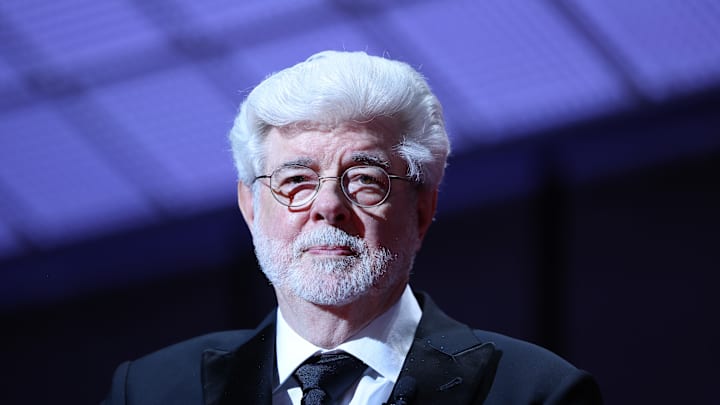Entire books have been written about the development and production of the first Star Wars movie, what we've come to know as A New Hope. The very short version is that George Lucas wrote a first treatment in 1973, expanded that to a first draft of a full script in 1974, and went through several revisions and rewrites before filming began in 1976. One of the most fascinating Star Wars adaptations in the franchise's history is based on that very first script.
Released between September 2013 and 2014 by Dark Horse Comics, shortly before the Star Wars license passed to Marvel — not surprising given that this was after the Disney purchase of Lucasfilm and Disney has also owned Marvel since 2009 — the eight-issue comic series titled The Star Wars has its origin when Star Wars researcher and writer the late, J.W. Rinzler discovered Lucas's first draft in the Star Wars archives. In an interview with Dark Horse in the lead-up to the release of The Star Wars, Rinzler described the sequence of events:
“While researching in the Lucasfilm Archives I’ve found many treasures — but one which truly astounded me was George’s rough draft for The Star Wars. His first complete imaginings were hallucinating to read — mind blowing … While working with George on another book project, I once asked if we could adapt his rough draft. He was hesitant. Years later, with Dark Horse’s invaluable help, we showed him a few drawn and colored pages of what it might look like. He gave us the
okay."
Ultimately, it's not hard to see why Lucas and his team changed their minds on a lot of the elements present in Star Wars and agree that most of those changes were for the better. However, the real value of Star Wars to fans is as a piece of history and a look into Lucas's creative process

The Star Wars gives fans a vivid look at what could have been
It's a universal rule of writing that there are no good first drafts, and that rule is on full display in The Star Wars. While many recognizable elements of the Star Wars story we know are present in this version of the story, it's obvious that Lucas hadn't quite finished hammering out the details. Characters named Luke Skywalker, Han Solo, and Darth Vader are all present, but significantly different from their final versions. Luke Skywalker is a secondary character, and the real main character is Annikin Starkiller. Han Solo is a big green alien, and Darth Vader is a fairly minor villain.
Perhaps most notably, in Star Wars, the equivalent of the Death Star is simply known as the "Space Fortress." It's not exactly hard to see why that one got changed in later rewrites. On the other hand, it makes the creative debt Star Wars owes to Akira Kurosawa's samurai classic The Hidden Fortress that much clearer.
Still, Star Wars is a decent read. Although it feels like this was the result of Lucas's "get as many ideas as possible onto the page" stage of the creative process, it's still the story of a group of heroes fighting an evil Empire to rescue the princess, destroy the giant space station, and liberate the galaxy. There's probably more action in this version of the story than the one fans are familiar with, particularly involving the Jedi (called the Jedi-Bendu at this point). Unlike the final version of Luke Skywalker, Annikin Starkiller is a Jedi to begin with and uses his lightsaber more freely than Luke would in the final version of Star Wars. Irrespective of the quality of the storytelling and writing, Star Wars is worth reading because it has absolutely fantastic art. It's vivid and detailed and absolutely captures the feel of the early Star Wars concept art famously done by Ralph McQuarrie.
One of the most interesting aspects of seeing this early draft of the story brought to life is how long Lucas had some of his ideas before the fans got to see them on screen. Certain names and concepts — like the planet Utapau, a politician named Valorum, and even a fleshed-out concept of the Sith as the enemy of the Jedi — that weren't actually depicted until either the Expanded Universe really took off or the Sequel Trilogies are actually some of Lucas's oldest and first ideas for the Star Wars stories. Fundamentally, Star Wars will be most valuable to fans as a piece of history and insight into George Lucas's creative process in developing what became one of the most iconic stories of all time.
Although Star Wars is now out of print, it's not hard to find the individual issues of the series at comic book stores, and an ebook version of the compiled graphic novel is still easily available online at various bookstores. As an interesting final aside, in 2022, it was announced that Dark Horse would once again start publishing Star Wars comics in tandem with the ongoing Marvel series.
